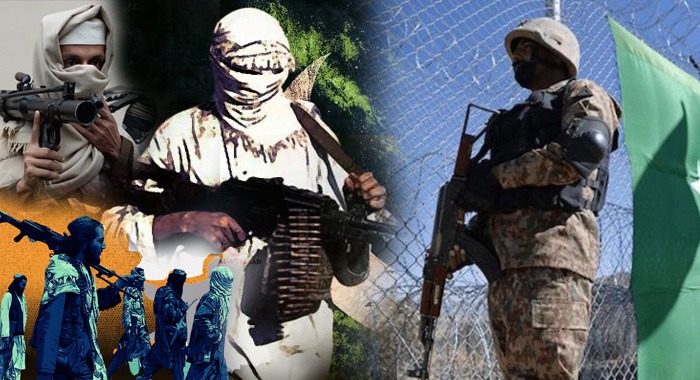A recent report by the United Nations has raised fresh alarm over the persistent presence of Tehrik-e-Taliban Pakistan (TTP) terrorists in Afghanistan, pointing to the group’s continued use of Afghan territory as a launchpad for cross-border attacks into Pakistan.
This story is based on the latest quarterly report submitted by the United Nations Secretary-General to the General Assembly and Security Council, under resolutions 74/9 and 2777 (2025). The report reviews the situation in Afghanistan and UNAMA’s mandate implementation at all levels since 21 February 2025. The report reveals that Afghanistan continues to serve as a staging ground for banned Tehreek-e-Taliban Pakistan (TTP) elements, while cross-border tensions between Pakistan and the Taliban administration have significantly escalated.
According to the report, numerous violent incidents occurred between Afghan and Pakistani security forces across key border districts, particularly in the eastern provinces of Nangarhar, Kunar, and Khost. In Nangarhar’s Goshtah, Naziyan, Lal Pur, and Mohmand Darah districts, and Kunar’s Khas Kunar and Dur Baba regions, frequent armed engagements were recorded. In Khost, tensions were especially high in the Tere Zayi, Gurbuz, and Jaji Maidan districts, prompting both countries to significantly increase their troop deployments along the frontier.
One of the most disruptive incidents took place on February 22, when clashes in Nangarhar led to the closure of the Torkham border crossing, a vital lifeline for trade and travel between the two nations. The shutdown lasted nearly a month, with the crossing reopening on March 19 for commercial traffic and on March 22 for pedestrians, only after local delegations from both sides brokered a temporary de-escalation.
In addition to these broader skirmishes, the UN report highlights several targeted incidents involving TTP commanders operating from Afghan soil. On February 16, a senior TTP figure was critically injured by unidentified gunmen while attempting to cross the border near Kunar’s Sar Kani district. Less than a month later, on March 11, another TTP commander was shot dead in Kunar under similarly mysterious circumstances. In yet another deadly episode, 18 suspected militants were killed on April 22 in Paktika province’s Barmal district while allegedly attempting to infiltrate into Pakistan. Just days later, on April 27, Pakistani security forces announced that they had neutralized 54 TTP fighters who were trying to cross over from Afghanistan, a significant escalation in what appears to be a more assertive strategy by Islamabad.
Pakistan has long accused the Taliban-led Afghan administration of providing sanctuary to TTP fighters, who have regrouped in Afghan territory following military operations in Pakistan’s tribal regions. The UN’s confirmation of these safe havens lends further weight to Pakistan’s warnings that cross-border militancy could unravel regional stability. The situation is particularly troubling for Pakistani authorities, as it comes amid rising domestic insecurity and mounting political pressure to curb the recent spike in terrorist incidents blamed on TTP elements.
Despite some tactical gains, the report underscores the strategic dilemma facing Islamabad: securing its porous western border while trying to engage diplomatically with a Taliban government that continues to deny hosting hostile militants. The UN also notes the risk to civilians caught in the crossfire. Several border clashes led to casualties, including an airstrike in Paktika province on March 28, which reportedly killed seven civilians, a claim that remains under dispute.
In short, the report paints a sobering picture of a simmering security crisis. The Taliban’s apparent inability, or unwillingness, to crack down on anti-Pakistan militant groups within its borders is now a major flash-point in bilateral ties. As Islamabad ramps up military operations along the border, and the Afghan side braces for further tensions, the threat posed by TTP’s Afghan sanctuary continues to cast a long shadow over regional peace efforts.





